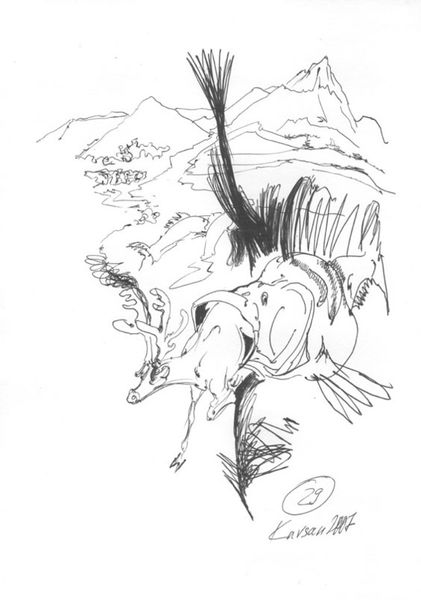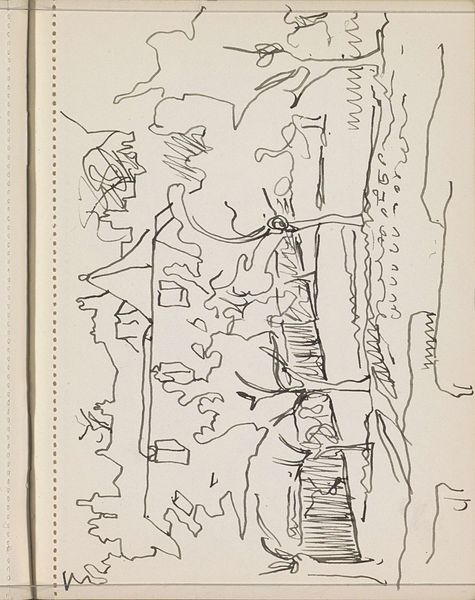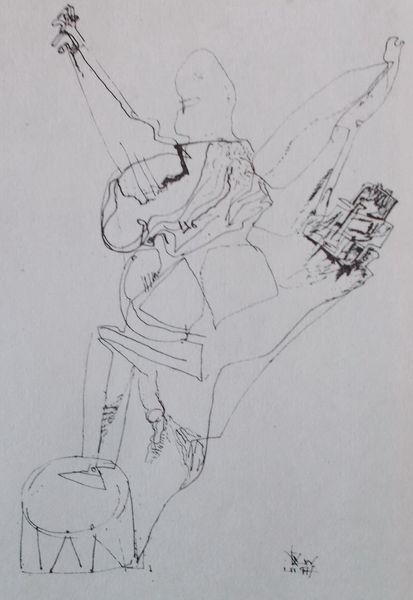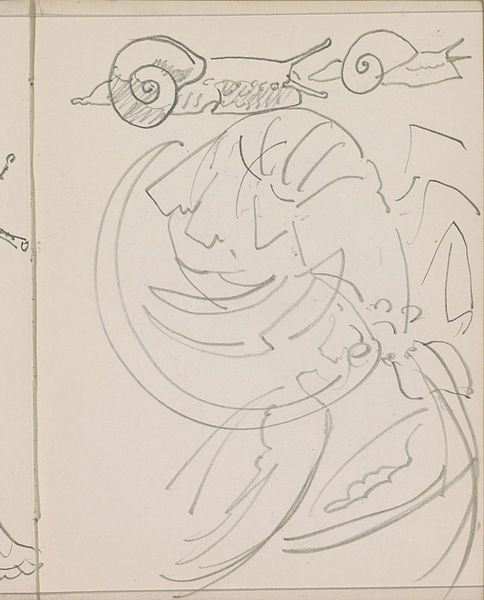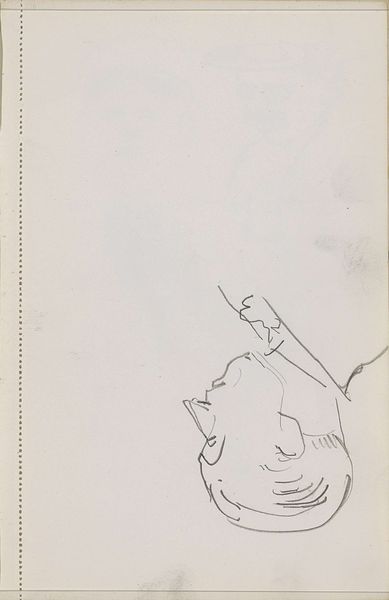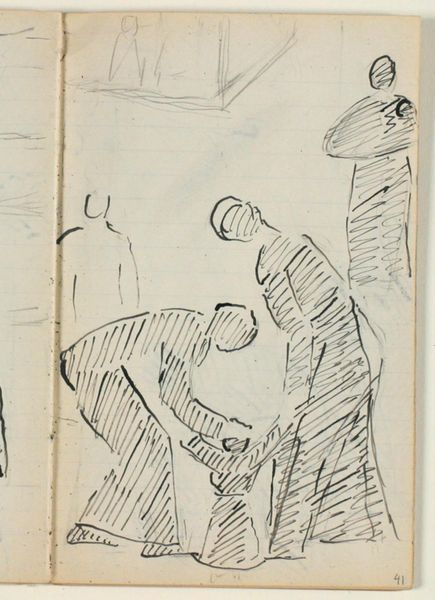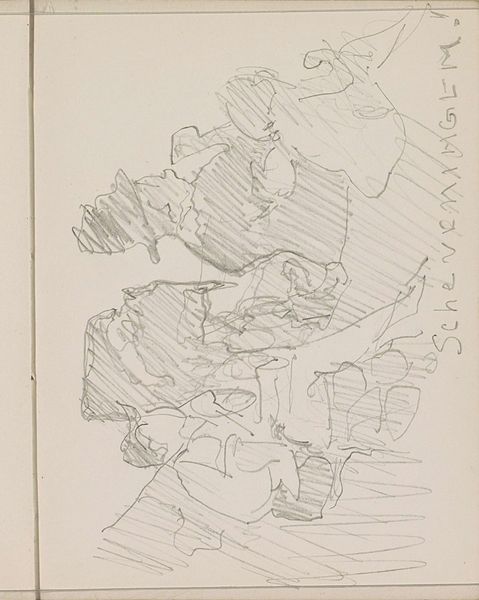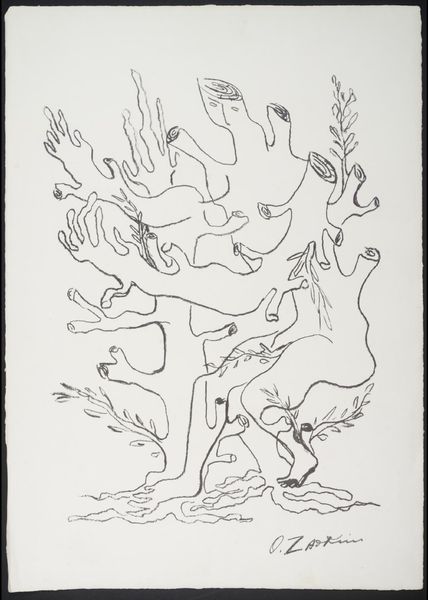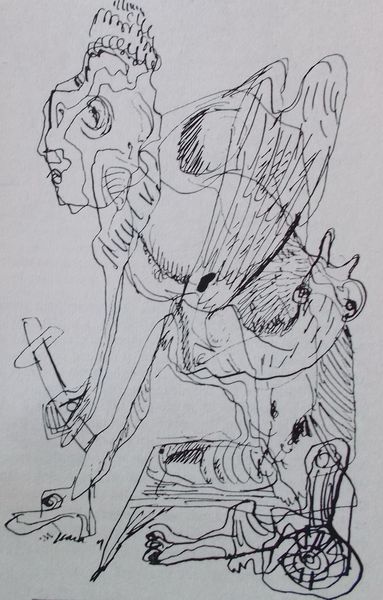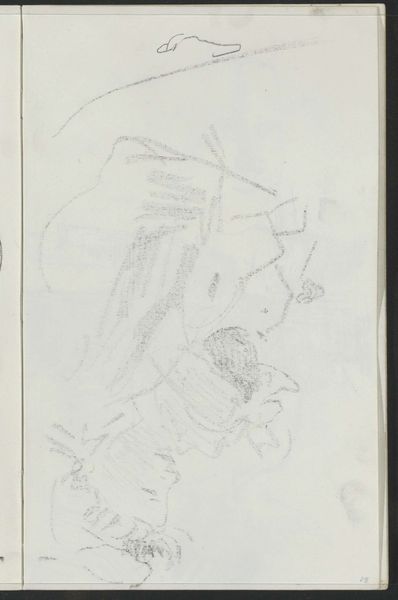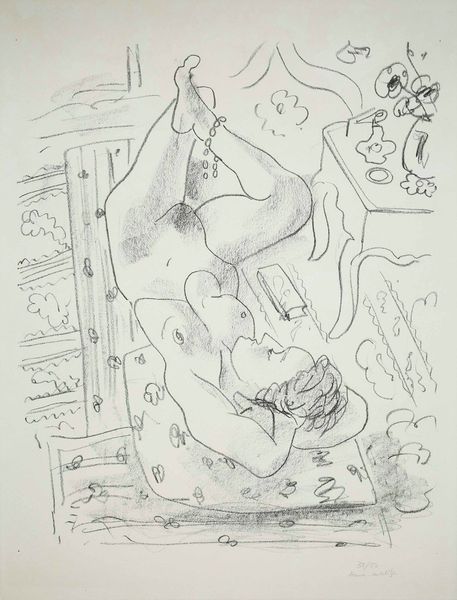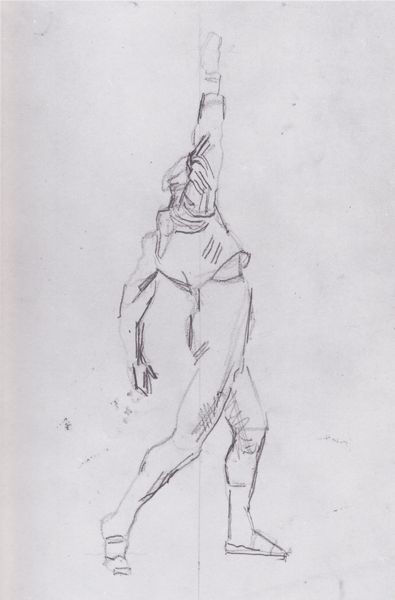
drawing, paper, ink
#
drawing
#
landscape
#
paper
#
ink
#
abstraction
#
line
#
modernism
Copyright: Rijks Museum: Open Domain
Editor: Right now we’re looking at "Landschap met bomen," or "Landscape with Trees," a drawing in ink on paper, dating from 1906 to 1945, here at the Rijksmuseum. It has an unfinished, raw feeling to it. How do you read this work? Curator: It's fascinating how the seemingly simple act of sketching trees can reveal so much about artistic and cultural shifts. This piece sits squarely within the timeframe of evolving modernism, where artists increasingly explored abstraction to reflect a rapidly changing world. I’m curious about the politics of landscape; how it gets used to form or reflect national identity, notions of the pastoral, and even ownership. The suggestive lines encourage us to contemplate our relationship with nature. Editor: So, you are seeing a larger commentary about nature’s place in society at the turn of the century? Is there a conversation about how land itself can be interpreted as power? Curator: Exactly! And the incompleteness is deliberate. The suggestion of trees is, I think, critical to how we view artistic representation itself. Does it reflect something about a period of social upheaval reflected in aesthetics? Do you agree that an abstract depiction reflects this period? Editor: That's a compelling thought. I was so caught up in its surface appearance. The artist isn't just showing us trees but making a statement about art's role. I’m left wondering, can any landscape be devoid of cultural and political implications? Curator: Precisely. Perhaps even unintentional cultural underpinnings. This piece pushes us to reconsider art’s role beyond simple representation, and opens dialogues about art as an historical object as well. Editor: Thanks! That was a great new perspective for me.
Comments
No comments
Be the first to comment and join the conversation on the ultimate creative platform.
